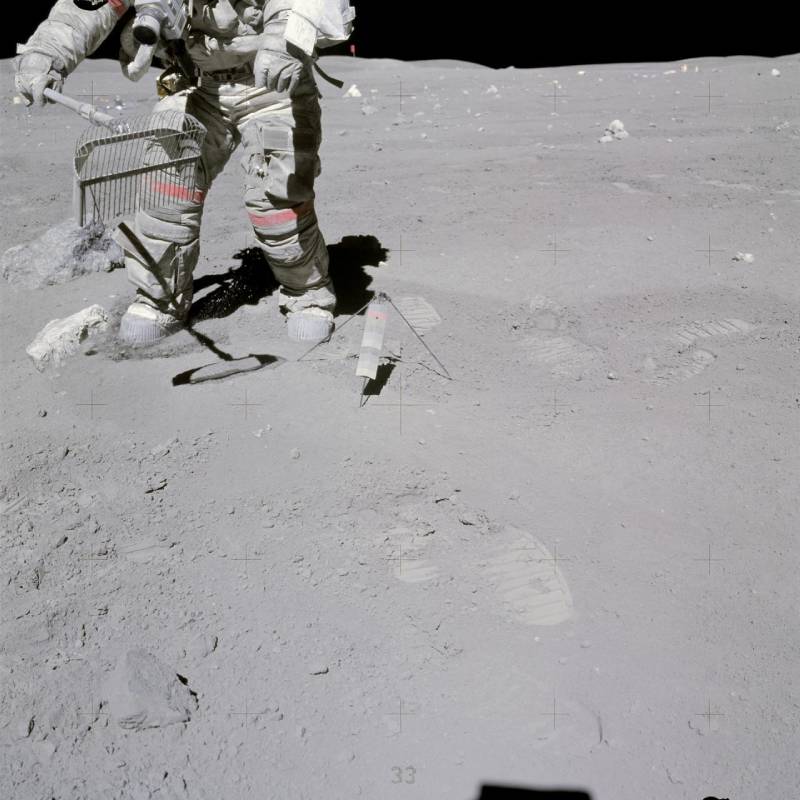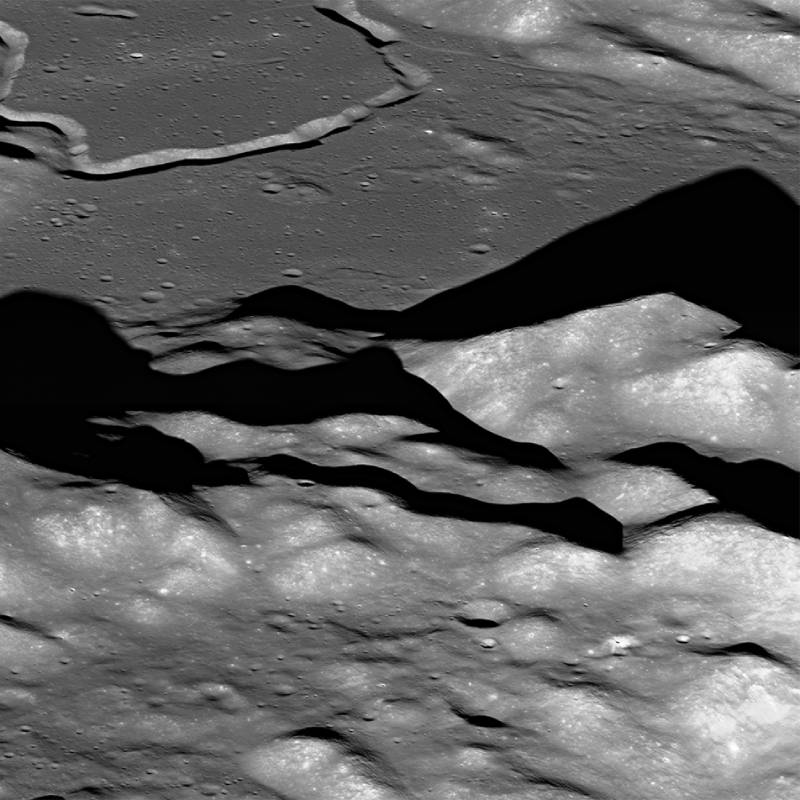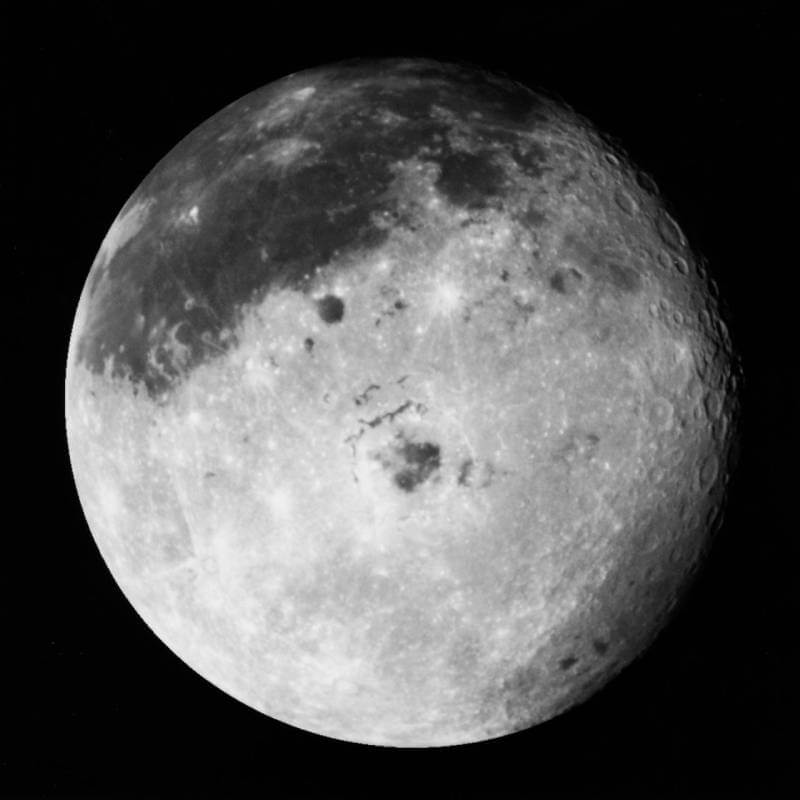The Moon has a volcanic legacy that spans billions of years – approximately 4.2 billion years ago. Between 3.8 and 3 billion years ago, the Moon experienced intense volcanic activity, which gave rise to expansive plains of solidified lava. Unlike the towering volcanoes on Earth, the Moon’s volcanoes created huge, flat landscapes. Interestingly, early astronomers once believed these planes were lunar seas – a case of cosmic mistaken identity.
Therefore, this misinterpretation led to the word “mare,” which means “sea” in Latin – it’s still used today to describe these volcanic plains. But the other features scattered across these lunar seas make the history of the Moon’s volcanism even more interesting. Winding channels called “sinuous rilles,” small volcanic formations like cones and domes, and mysterious dark deposits included. Even though these features may be relatively small in comparison, they add complexity to the history.
What Is The Moon’s Volcanic Past?
When most think of the Moon, they probably think of a barren, lifeless sphere seemingly untouched by volcanic forces. However, that’s not the case; the Moon has a volcanic history. But, unlike Earth, where active volcanoes dot the landscape, volcanism on the Moon is seemingly dormant and primarily ancient. The Moon claims to be the “first” volcanic record keeper in the solar system.
During NASA’s Apollo Missions, which occurred from 1969 to 1972, marked the volcanism. The astronauts in the missions collected lunar samples such as soils and rocks that showed that lunar basalts are laden with titanium and iron, providing clues on the Moon’s evolution and formation.

Based on the lunar samples collected during the missions, scientists initially believed that the Moon’s volcanic activity had ended around 3 billion years ago. From the samples, volcanic minerals dating back to that time suggest that these were some of the last eruptions on the Moon.
However, in December 2020, China’s Chang’e 5 rover was sent to the Moon and returned with fresh samples enclosed safely within an airtight capsule. Upon analysis, Chinese Academy of Sciences (CAS) researchers concluded that these new samples contained volcanic minerals dating back about 2 billion years, meaning the Moon’s volcanic activity happened far longer than believed.
Is The Moon Volcanically Inactive?
You are also wondering how the Moon’s volcanoes remain active for an extended period. In a study in 2021, scientists compared the volcanic minerals from Chang’e 5 and Apollo missions. The main difference was that the newly collected samples had shown slightly lower melting points. The recent findings lie in understanding the Moon’s mantle – the once-liquid magma layer beneath the lunar crust.
Unlike the Earth’s mantle, which has volcanic activity due to intense liquidity and heat, the Moon’s mantle has significantly cooled over the past Billion years. It is now only completely solidified or partially molten, rendering the Moon slightly inactive. This has posed a challenge because volcanic activity typically needs a hot, molten mantle. The team behind the study revisited the mission’s lava samples and concluded that Chang’e 5 samples had higher levels of titanium dioxide and calcium oxide. These minerals had a lower melting point, enabling the magma to remain molten at lower temperatures. Consequently, the lunar mantle could sustain volcanic activity even as it continued to cool. Interestingly, this is the first-ever direct evidence regarding how the Moon’s mantle cooled, and hopefully, we will learn more about the solar system.
How Did Lunar Volcanoes Erupt?
When considering terrestrial volcanoes, it’s easy to envision a dramatic and fairy explosion. It’s quite the opposite; the Moon’s volcanic activity unfolds through a more subdued event, unlike the vivid imagery of molten lava dramatically spewing from the Earth’s volcanic depths, for lunar volcanic eruptions lie in the buildup of pressure created by volatile forces in the Moon’s interior. The important actors are volcanic gases, mainly sulfur and carbon dioxide, beneath the Moon’s surface.

Over time, these gases accumulate within the Moon – the steady and slow accumulation sets the stage for lunar volcanism. With pressure built up with the subsurface of the Moon, it creates a taut, anticipatory atmosphere, with a coiled spring waiting for release. When the gases finally reach a certain critical point, springing action through the lunar crust creates fractures. As the fractures increase, they form a molten rock rich in balsamic composition that seeps upward, thus forming a gentler, more outpouring magma. This effusive activity breeds the mare mentioned earlier.
Conclusion
Unlike Earth’s explosive and fiery volcanoes, the Moon’s volcanoes are quiet. This goes to show the differences and surprises that could be in space. Every day, you learn intriguing, sometimes mind-blowing facts, and it will always be that way as research is ongoing on the Moon, the solar system, space, the Earth, name it.

